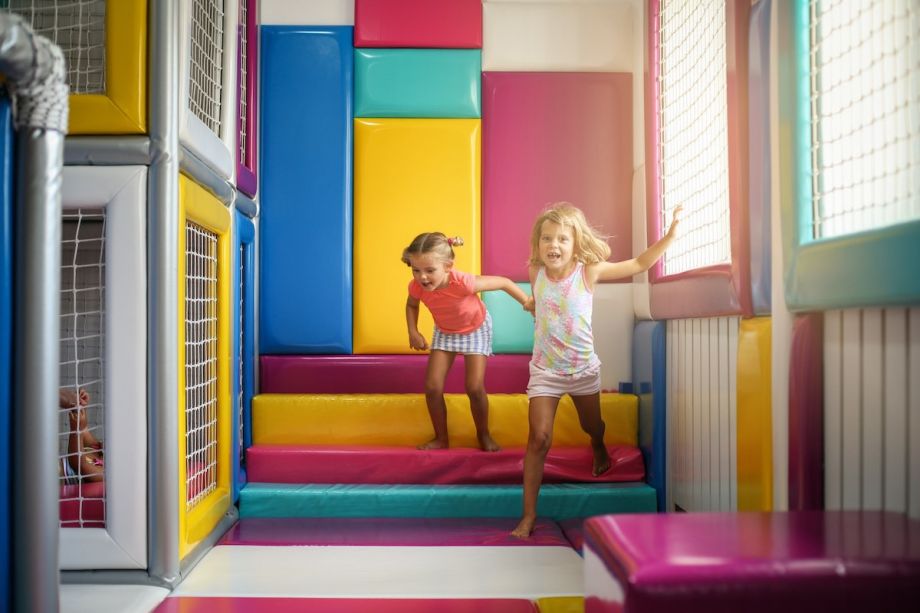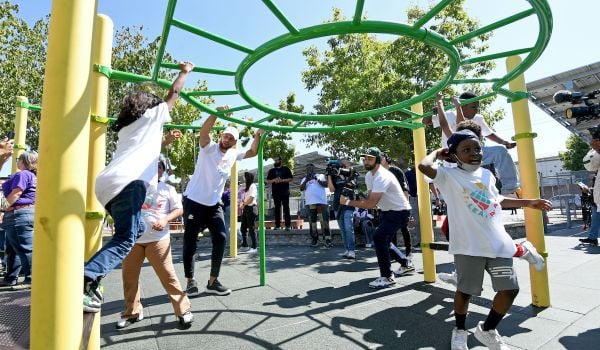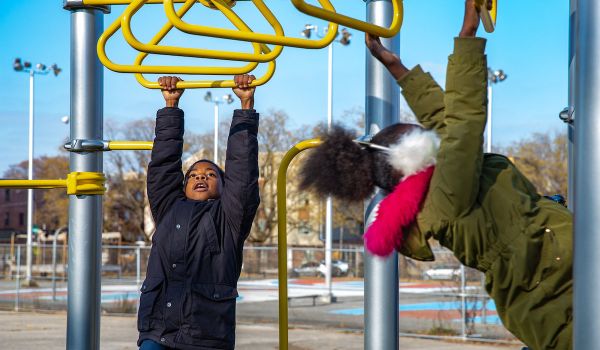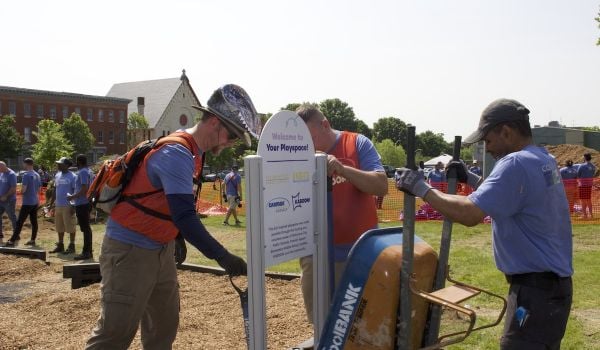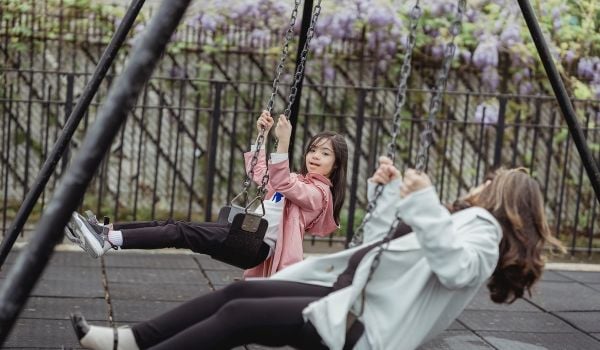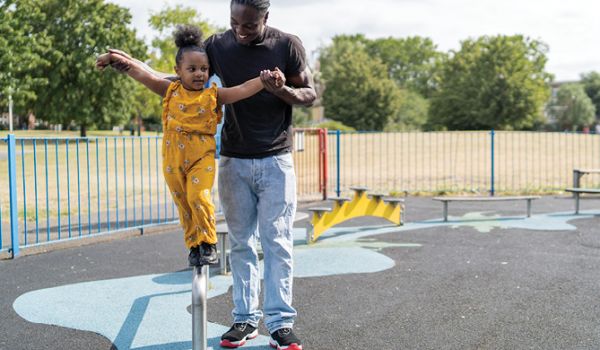With extreme heatwaves, poor air quality alerts and suburban sprawl attacking tree canopy from coast to coast, playgrounds have become hazardous to our children. There has never been a better time to reconsider the environments in which our children play, run free, explore new terrain and build relationships with other youth.
There is a simple, and familiar, solution. If you grew up in the ‘80s and ‘90s, you may remember that indoor playgrounds were a huge hit. From fast food chains to malls, we had our own place to play – for free – whenever our parents visited these public spaces.
Maybe it’s time we revisit the trend. This time, for good.
The rise and fall of the indoor playground
To understand where the allure of indoor playgrounds in public places began, let’s take a trip back to Chula Vista in 1972.
That’s where the McDonaldland Playland opened as the first permanent McDonald’s playground, just as the fast food’s chain grew in popularity with young children. Ladders, slides and carousel rides were all part of the initial structure, which brought the fantastical setup of the franchise’s commercials to life.
Before the playground even finished construction, that McDonald’s location saw a 34% increase in business. Burger King got in on the fun in 1985, with other fast food chains eventually following suit.
It wasn’t long before safety concerns emerged, with unreported injuries leading to a $4 million settlement with the Consumer Product Safety Commission. Over 400 children were injured while playing on the Big Mac Climber from the ‘70s to the ‘90s. Concerns heightened as harmful bacteria were frequently found lingering within ball pits and other play surfaces.
An ‘80s baby myself, the ball pit was always the highlight of my family’s fast food experiences while growing up. I’d ask my parents if we could go inside rather than taking the drive-thru. There was something about the freedom to roam. This unique space was created solely for me in mind, perfectly sized, and adults couldn’t ruin it. It was an escape.
Over the next few years, it seemed that most places my family visited had an element of entertainment geared towards children. Whether it was birthday parties at Chuck E Cheese or the arcade room located in the back of most Cici’s Pizza locations, I felt seen and accomodated as a child. Fast forward to today, and things are quite different for my own daughter. As parents, my partner and I struggle to find a safe indoor play area to take our child on those days where she just can’t burn all the extra energy off quick enough.
As the pandemic shut the interior of most commercial spaces down, companies began rethinking how to take advantage of their underutilized indoor playgrounds — the spaces that once brought them so much attention and business. My wife and I drove out to one Chick-Fil-A location last year only to see that their playground area was being used as an employee-only breakroom.
Restaurants aren’t alone. We’ve seen the same storyline unfold in malls, too. Indoor mall playgrounds grew in popularity in the ‘80s and ‘90s, often replacing fountains and commonly being placed near food courts. They were great for boosting the lingering time for parents as it was harder to pull children away. But as mall traffic now continues to spiral, these indoor areas are being exchanged for larger for-profit companies offering more extreme and much more expensive alternatives to stay afloat. Mall playgrounds are being swapped out for laser tag, trampoline parks and even swimming pools.
This adds on to the costs of taking our children places to have fun. My own family is currently paying for an annual membership to both our local children’s museum as well as an indoor nature center which provides a designated play area as well as opportunities to observe wildlife and aquatic species.
What if we could watch our children play safely indoors in some of the third places we already visit?
The power of the indoor playground
A third place, in its simplest definition, refers to the public spaces we visit that aren’t either our home or our place of work (our first and second places, respectively). Such third places include libraries, houses of worship, bars and pubs, barbershops and salons, restaurants and cafes, and gyms and parks.
Each of these places could benefit from integrating children’s play spaces into their offerings. So, too, could our families and communities.
But why, you might ask, should we develop these play spaces indoors? Children get a place to call their own without being exposed to direct sun, extreme heat and poor air quality. Parents, who often have difficulty making friends with other people at a similar stage in life, get a place to stay cool and potentially meet new people. We can mitigate public health issues – likely to be an even bigger concern for today’s parents – by including indoor playgrounds within businesses’ normal cleaning and maintenance rotation. Rather than making children use jungle gyms and swing sets that are constantly being worn down by the elements and often languishing in disrepair out of sight, having these play spaces indoors can help them remain at the forefront of businesses’ mind.
There’s also the economic argument: Small businesses can build balanced foot traffic throughout the week and the day instead of seeing a few peak hours. A coffee shop might, for example, see traffic stay consistent after 3 p.m. on weekends when it’s typically the hottest outdoors for children. Parents would have the chance to grab a midday pick-me-up while also watching their children play in the play area indoors.
We’ve seen the financial gain that can come from considering children in commercial development. In 2021, Cici’s Pizza – a mainstay of my own childhood – filed for bankruptcy. But by rethinking how families work within their business concepts and ramping up its neglected arcade-style game rooms, the chain has seen an incredible return on their investment. The sharing of these ideas could inspire more businesses to create indoor playgrounds, game rounds or even splash pads in their concepts.
With a bit of creativity, indoor play areas can open the door to a wide range of flexibility for parents. Parents could work remotely from a cafe or library or take in-person meetings for networking or career opportunities. Single parents could have the option of comfortably taking a coffee date instead of completely pausing their dating life. Parents could conduct first-round interviews with babysitters and nannies in a public place in which they can safely observe important interactions without the awkwardness of initial in-home meetings. Where I see the biggest advantage is the opportunity for parents to work on their small businesses and seek out their dreams, without having to pay for a babysitter for some free time.
This is especially a missed opportunity for small businesses in streets with high foot traffic. As beacons in densely-populated areas, such small businesses can promote a greater sense of community by adding a family component. Parents so often have to decline invitation somewhere because there isn’t anything for their children to do there. Start small. A cozy corner with books and an activity table should suffice. Ask parents that patronize your business what they’d like to see to make their lives easier.
Across the country, there are already examples of businesses and public spaces including indoor playgrounds in their concepts, making for inclusive third places for families of all sizes. Take the free indoor playgrounds at Cornerstone Church Fishers in Indianapolis; The Cincinnati Children’s Hospital Discovery Zone; The Well Coffeehouse in Milton, Pennsylvania; Greystone Recreation Center in Raleigh, North Carolina; and the Apex Center in Arvada, Colorado.
With families looking to escape the suburbs for the benefits of denser, walkable neighborhoods with sidewalks, green space and amenities nearby, small businesses should consider getting more creative to accommodate young children.
If you are a small business owner in a dense neighborhood, a city planner or even a person in management at a national chain, consider these opportunities to keep families visible in the built environment.
Being cognizant of our environmental crisis and placing children at the forefront of our small business landscape is being a community leader at its best. A safe place for children is a safe place for everyone.

Barry Greene, Jr. is Next City's Equitable Cities Reporting Fellow For Reparations Narratives and a native of Southside Richmond, Virginia. Through his newsletter and moniker “density dad,” Greene is constantly working to spread awareness of the necessity to think of families with young children as well as seniors within the built environment. As a 2023 NACTO Transportation Justice Fellow, Barry aims to help Richmond return to its glory days of leading the industry in public transportation. You can catch him commuting by Brompton, bus or both in conjunction.

